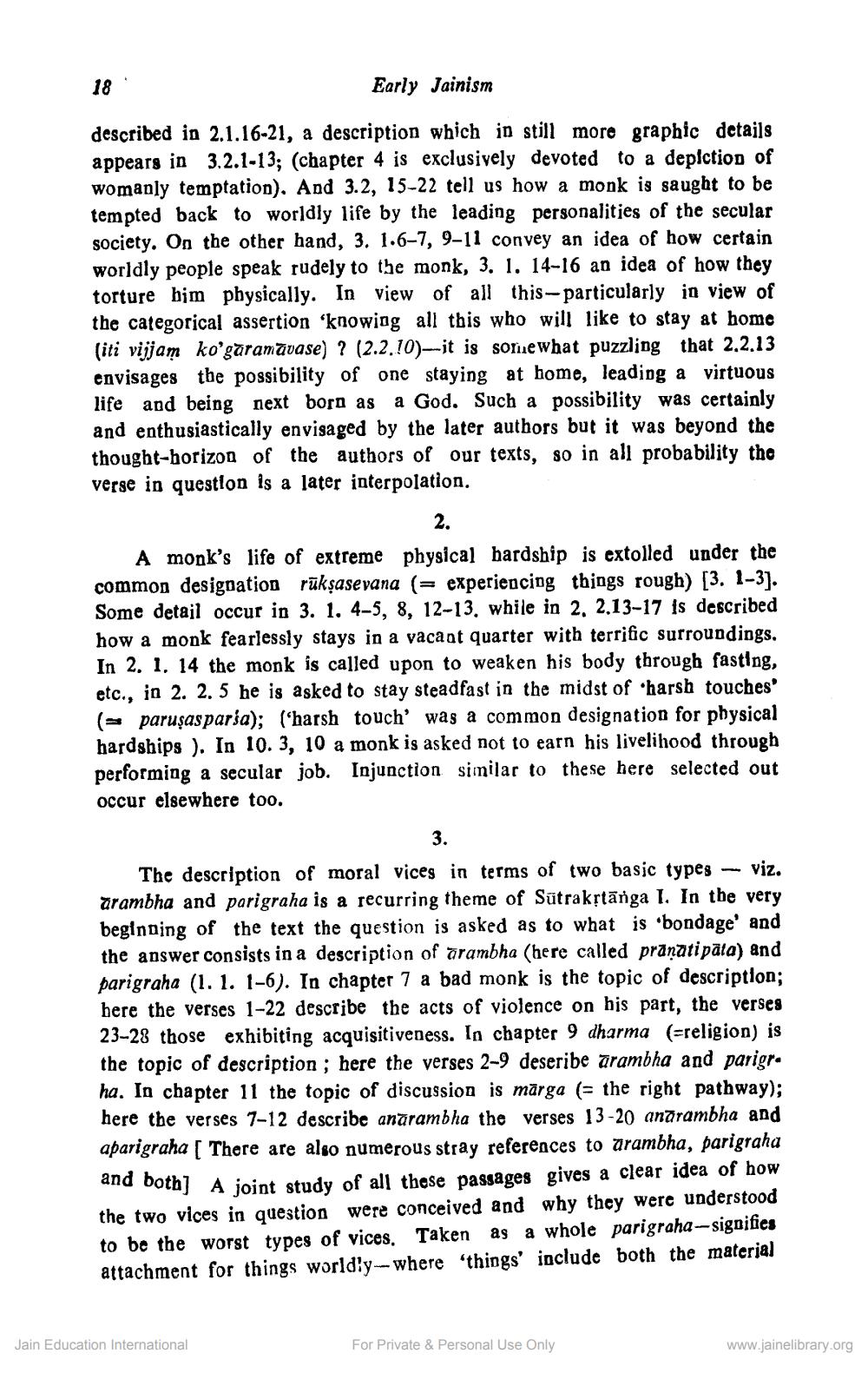________________
18
Early Jainism
described in 2.1.16-21, a description which in still more graphic details appears in 3.2.1-13; (chapter 4 is exclusively devoted to a depiction of womanly temptation). And 3.2, 15-22 tell us how a monk is saught to be tempted back to worldly life by the leading personalities of the secular society. On the other hand, 3. 1.6-7, 9-11 convey an idea of how certain worldly people speak rudely to the monk, 3. 1. 14-16 an idea of how they torture bim physically. In view of all this particularly in view of the categorical assertion 'knowing all this who will like to stay at home (iti vijjam ko'garamāvase) ? (2.2.10) it is somewhat puzzling that 2.2.13 envisages the possibility of one staying at home, leading a virtuous life and being next boso as a God. Such a possibility was certainly and enthusiastically envisaged by the later authors but it was beyond the thought-horizon of the authors of our texts, so in all probability the verse in question is a later interpolation.
A monk's life of extreme physical hardship is extolled under the common designation rūkșasevana (= experiencing things rough) [3. 1-3). Some detail occur in 3. 1. 4-5, 8, 12-13. while in 2. 2.13-17 is described how a monk fearlessly stays in a vacant quarter with terrific surroundings. In 2. 1. 14 the monk is called upon to weaken his body through fasting, etc., in 2. 2. 5 he is asked to stay steadfast in the midst of 'harsh touches (= paruşasparia); (harsh touch' was a common designation for physical
ships ). In 10. 3, 10 a monk is asked not to earn his livelihood through performing a secular job. Injunction similar to these here selected out occur elsewhere too.
The description of moral vices in terms of two basic types – viz. arambha and parigraha is a recurring theme of Sūtrakrtānga I. In the very beginning of the text the question is asked as to what is bondage' and the answer consists in a description of arambha (here called prāņāti pāla) and parigraha (1. 1. 1-6). In chapter 7 a bad monk is the topic of description; here the verses 1-22 describe the acts of violence on his part, the verses 23-28 those exhibiting acquisitiveness. In chapter 9 dharma (=religion) is the topic of description; here the verses 2-9 deseribe arambha and parigr. ha. In chapter 11 the topic of discussion is märga (= the right pathway); here the verses 7-12 describe anarambha the verses 13-20 anarambha and aparigraha ( There are also numerous stray references to arambha, parigraha w both] A joint study of all these passages gives a clear idea of how the two vices in question were conceived and why they were understood to be the worst types of vices. Taken as a whole parigraha-signifies attachment for things world!y--- where 'things include both the material
Jain Education International
For Private & Personal Use Only
www.jainelibrary.org




